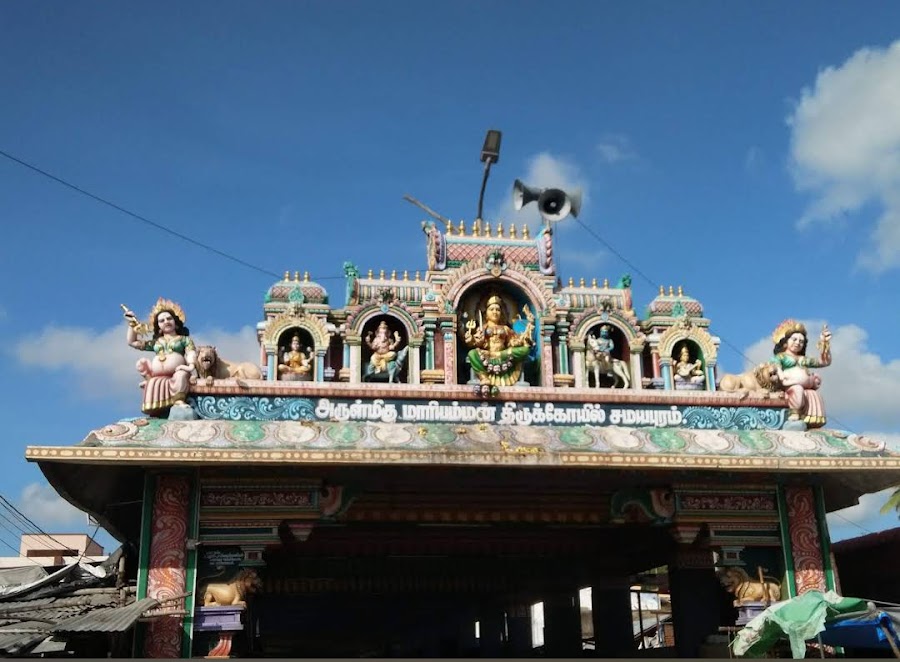
Arulmigu Samayapuram Mariamman Temple
Tiruchirappalli, India
- Explore the intricate temple architecture.
- Observe local customs and traditions.
- Offerings to the deity Mariamman.
- Participate in temple rituals and prayers.
- Witness the vibrant temple festivals.
Known for:
Description:
Arulmigu Samayapuram Mariamman Temple is a renowned Hindu temple dedicated to Mariamman, a form of the goddess Shakti, located in Samayapuram near Tiruchirappalli, Tamil Nadu, India. It is one of the most important temples in the region, attracting millions of devotees, especially during the Tamil month of 'Panguni' (March-April) for the annual festival. The temple is known for its powerful deity believed to possess immense healing powers and is visited by people seeking cures for various ailments. The vibrant atmosphere, intricate architecture, and deep-rooted faith make it a compelling spiritual destination. The temple complex also houses smaller shrines dedicated to other deities. Devotees often offer prayers, perform rituals like 'Mavilai Deepam' and 'Angapradakshinam', and tonsure their heads as a sign of devotion.
History:
The history of the Arulmigu Samayapuram Mariamman Temple is steeped in local legend and tradition. It is believed that the original deity was located in a nearby forest. The current temple structure dates back to the 17th century, attributed to the reign of the Vijayanagara Empire and later developed by the Nayak rulers. Legend says that the deity was initially considered fierce and was moved to its present location to appease her. Over time, the temple gained prominence and became a major pilgrimage site. The temple's architecture reflects the Dravidian style, with towering gopurams (gateway towers) adorned with intricate sculptures. The temple has been renovated and expanded over the centuries, with contributions from various rulers and devotees. It stands as a testament to the enduring faith and devotion of the people of Tamil Nadu.